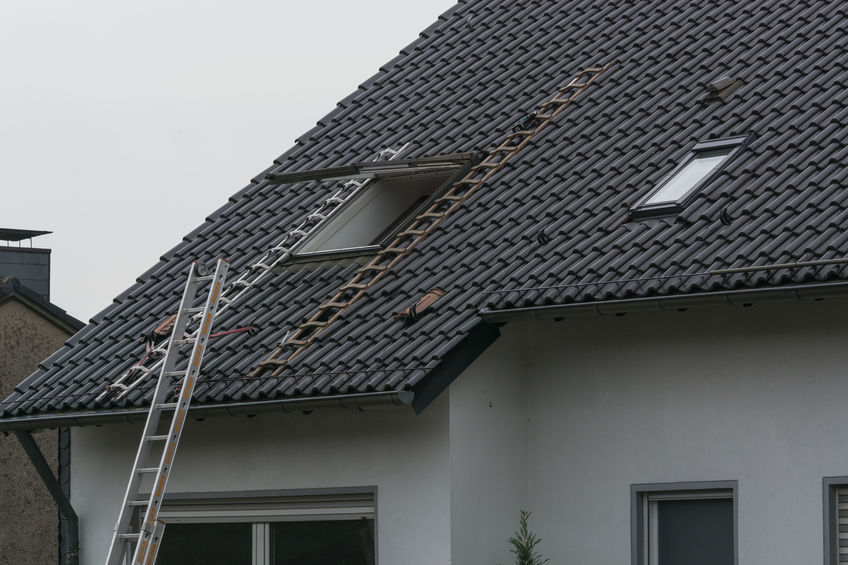Nowadays, increasing numbers of people are turning to renovating their homes rather than selling up their properties and moving to other properties when they find their current home no longer meets all of their needs. This isn’t all too surprising. After all, moving home can be an extremely lengthy and expensive process. You have to browse the market, find something that ticks all of your boxes and meets your aesthetic preferences, you also need it to be in an appropriate location (perhaps near to kids’ schools, close to public transport links and in a safe and desirable neighbourhood). Then you have the rigmarole of putting your own property up for sale and waiting for someone to make an offer you’re pleased with. That’s before we even get to packing up your life into boxes and getting from A to B. If you already love your home and it needs a simple, tweak, such as an extra room, renovating really can be a much simpler and more straightforward means of getting what you want. One of the most popular home renovations people are having carried out at the moment is a loft conversion. But a concern that many potential loft-converters have is whether they need loft conversion planning permission. Here’s everything you need to know on the subject of loft conversion plans.
Loft Conversion Planning Permission
Planning permission is essentially the process of finding out whether local authorities will allow you to make changes to your property. It’s purpose is to follow building regulations in order to protect the value of the properties surrounding your home and ensuring that any changes you make don’t bother people living around you. Generally speaking, loft conversions don’t require official planning permission. This is because the development of a loft conversion – a standard conversion, at least – makes no impact on the exterior of your property. It doesn’t change its appearance. It doesn’t impose on neighbours’ views or space between properties. You may need to seek permission for a new loft conversion or even an existing loft conversion if you’ve moved into a property that has already had one created without seeking permission.
Planning Permission for a Roof Window
Of course, the majority of us will need to make changes to our roof when we undertake development loft conversion. Otherwise, the room we create will be dark and void of natural light. Now, generally speaking, planning permission isn’t required for loft conversion windows. This is because they do not generally impose on others. You just need to ensure that the following guidelines are adhered to:
- Any alteration to project no more than 150 millimetres from the existing roof plane
- No alteration to be higher than the highest part of the roof
- Side facing windows to be obscure-glazed; any opening to be 1.7m above the floor
You will be able to find more information about this in “any other alteration to the roof of a dwellinghouse” as detailed in Schedule 2, Part 1, Class C of The Town and Country Planning (General Permitted Development) (England) Order 2015 (as amended).

Of course, some people want to create a dormer loft conversion, which creates an extra structure on the roof with a protruding window. There are very specific regulations for new dormers. The planning permission site notes that a dormer is generally constructed from timber. The main parts that form a dormer are the roof, side walls (cheeks) and front wall which faces the garden. The cheeks can be supported in one of two ways:
- The rafters can be doubled and bolted together with the cheeks then constructed off the rafters
- If the dormer width means the cheeks are at the edges of the roof then the cheeks can be taken down to the floor and supported off the floor joists (which are doubled) or on a beam, or in some cases by the party or external walls
It is also stated that the front wall of the dormer can be supported off the external wall, or if it is to be set back from the external line of the house, it can be supported off the new floor joists, which should be designed to cater for the extra load of this wall.
Fire safety also needs to take top priority when seeking permission for a new dormer. The dormer may need to be constructed so as to give resistance to a fire spreading to or from a neighbouring property – the nature and extent of the construction to give this fire resistance will be dependent on the size of the dormer cheek and its proximity to the boundary.
When Is Loft Planning Permission Required?
Of course, there are instances where planning permission will be required for a loft conversion. Generally, this will be when your conversion will alter the overall size of your property and differences will suddenly become apparent from outside your home. If you plan to alter your roof space so that it exceeds specific limits or conditions, planning permission will be required. To help make things clear, here are the specifics for loft conversions that are considered a permitted development and consequently do not require official planning permission.
- A volume allowance of 40 cubic metres additional roof space for terraced houses
- A volume allowance of 50 cubic metres additional roof space for detached and semi-detached houses
- No extension beyond the plane of the existing roof slope of the principal elevation that fronts the highway
- No extension to be higher than the highest part of the roof
- Materials to be similar in appearance to the existing house
- No verandas, balconies or raised platforms
- Side-facing windows to be obscure-glazed; any opening to be 1.7m above the floor
- Roof extensions not to be permitted development in designated areas
- Roof extensions, apart from hip to gable ones, to be set back, as far as practicable, at least 20cm from the original eaves
- The roof enlargement cannot overhang the outer face of the wall of the original house
If your plans fit within these guidelines, you can continue a loft conversion without planning permission. If you are planning a loft conversion that falls outside of these guidelines, or otherwise sounds like it may alter the exterior of your home, it’s a good idea to take a look at “the enlargement of a dwellinghouse consisting of an addition or alteration to its roof” in Schedule 2, Part 1, Class B of The Town and Country Planning (General Permitted Development) (England) Order 2015 (as amended). There are also specific rules for “any other alteration to the roof of a dwellinghouse” if you feel you are making other changes that are not listed in the previous section. These rules can be found in Schedule 2, Part 1, Class C.
Please bear in mind that the above information is merely guidance and it does not necessarily apply to loft conversions being carried out on the following types of properties:
- Flats and maisonettes
- Converted houses or houses created through the permitted development rights to change the
- Other buildings
- Areas where there may be a planning condition, Article 4 Direction or other restriction that limits permitted development rights
If you are considering creating a conversion on any of these highlighted properties, you will have to follow other, more specific guidelines that have been set out in regards to them.
How Much Is Planning Permission for a Loft?
If you require planning permission for a loft conversion, you will generally find that you will have to pay an application fee. While there are exceptions, for example, if you’re looking to carry out work on listed buildings, or you’re looking for planning permission to demolish structures in a conservation area, you may find that no fees apply to your application. However, by and large, you will have to fork out something for most applications. Now, we can’t provide a guaranteed and set figure for how much planning permission will cost you, as permission costs can widely vary. To be certain of how much your application will cost you for your given project, it’s a good idea to visit planningportal.co.uk and use the Planning Portal’s online fee calculator.

This is free to use and will give you a better idea of what you can expect to pay. Once you’ve found out the cost of your planning permission and are ready to get started on your project, paying is simple. You simply return to the Planning Portal and can make a payment by one of the following methods:
- Secure online payment by credit or debit card (for payments up to £1,000)
- Payment by telephone (for payments up to £1,000)
- Payment by bank transfer
- Payment by cheque
- Nominate somebody else to pay (by the above methods)
How Long Does Loft Planning Permission Take?
When you submit your planning permission request, it goes through two separate processes to determine whether what you are requesting is reasonable or not. There will be an external assessment followed by an internal assessment. Each part takes up to four weeks, meaning that for the majority of relatively minor, household renovations, gaining permission will take around eight weeks. The external assessment allows the request to be seen by those who are situated around your property or involved in your property, such as neighbours, local businesses and utility companies. The internal assessment will see a planning officer research your local area and determine whether the renovations will fit in. Permission will then either be denied or if regulations permitted, you will be approved.

